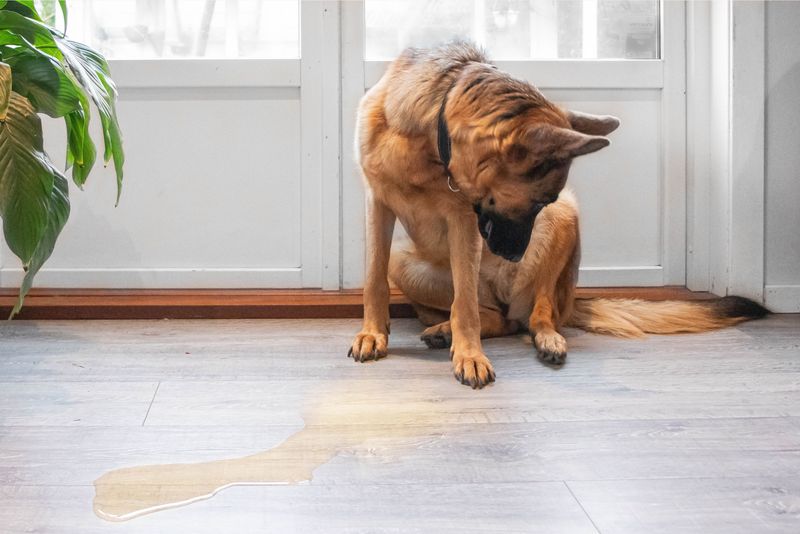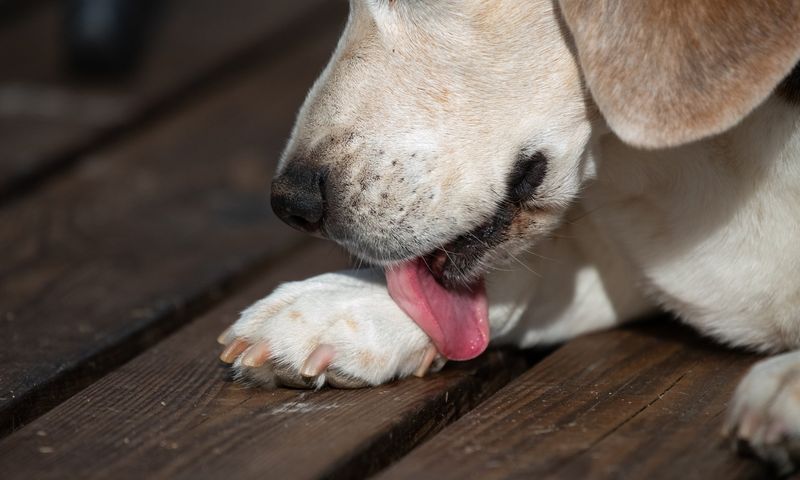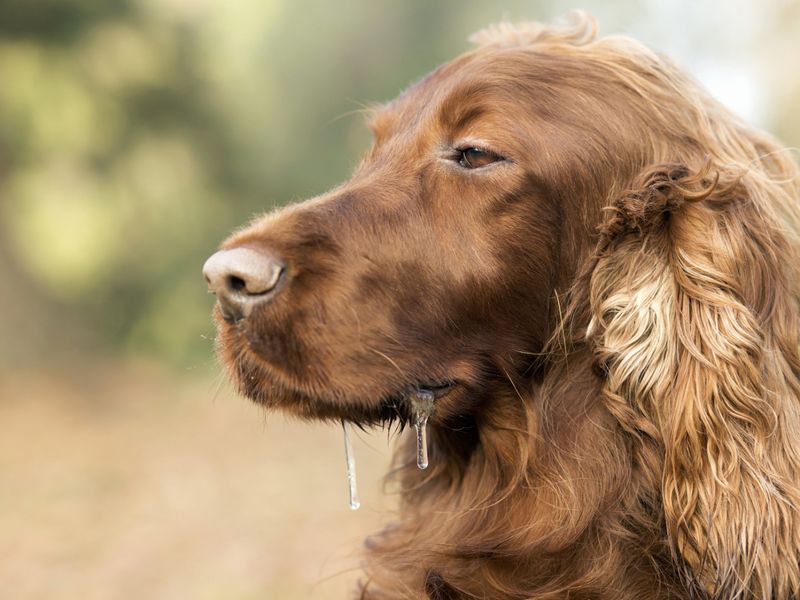Dogs, like humans, can experience anxiety, which manifests in various ways. Understanding these symptoms is essential for pet owners who wish to ensure their furry friends’ well-being. In this article, we explore 12 common symptoms of dog anxiety and provide insights into what your dog might be trying to communicate.
Excessive Barking
Excessive barking can be more than just a nuisance; it’s often a sign that your dog is feeling anxious or stressed. This behavior may stem from fear, a change in environment, or even boredom. When dogs bark excessively, they’re trying to communicate their discomfort and need for attention. It’s crucial to observe the situations that trigger this behavior. Providing mental stimulation or consulting a professional trainer might help mitigate this issue. Understanding the root cause can help in addressing the anxiety and creating a more peaceful environment for your pet.
Panting and Shaking
Panting and shaking are common physical manifestations of anxiety in dogs. Unlike the normal panting after exercise, anxiety-induced panting is often accompanied by trembling. These symptoms may occur during thunderstorms, fireworks, or other stress-inducing situations. Recognizing these signs early can help you take appropriate action, such as providing a safe space. Calming products or consulting a veterinarian for anxiety management solutions might also be beneficial. Your attentive care can make a significant difference in alleviating your dog’s discomfort.
Destructive Behavior
Destructive behavior in dogs can often be linked to anxiety. Chewing furniture, digging excessively, or tearing up toys may be a way for your pet to cope with stress. Such behaviors are common when dogs are left alone for extended periods. They may feel abandoned or restless, leading to chaos in your home. Training, consistent routines, and interactive toys can help mitigate this issue. By providing proper outlets for energy, you can reduce anxiety and keep your home intact.
Urinating or Defecating Indoors
When house-trained dogs start urinating or defecating indoors, anxiety could be the culprit. This behavior may arise from fear or a disruption in their daily routine. Understanding the triggers, such as new visitors or loud noises, can help prevent such accidents. Re-establishing a consistent routine and providing reassurance can be effective strategies. Patience and empathy play key roles in resolving this issue, ensuring your home stays clean while your pet feels secure.
Aggression
Aggression in dogs can sometimes be a signal of underlying anxiety. This might manifest as growling, snapping, or even biting. It often happens when dogs feel threatened or cornered. Identifying the triggers, such as unfamiliar people or environments, is essential. Professional assistance might be needed to manage aggressive tendencies safely. Building confidence through positive reinforcement and socialization can be beneficial. Understanding aggression as a symptom rather than a trait can lead to more compassionate solutions.
Excessive Licking
Persistent licking, especially of paws or other body parts, can be a sign of anxiety in dogs. This behavior can lead to sores or infections if not addressed. It’s often a coping mechanism for stress or boredom, similar to nail-biting in humans. Identifying stressors and providing distractions can help alleviate this behavior. Regular vet check-ups are essential to rule out medical issues. With proper attention, you can help your pet find healthier ways to cope.
Hiding or Isolation
When dogs isolate themselves or hide, it may indicate anxiety or fear. This behavior can occur due to loud noises, new environments, or changes in routine. Creating a safe and comforting space can encourage your dog to emerge and feel secure. A gentle approach and patience are key in these situations. Understanding the underlying causes and addressing them can create a more harmonious living environment for your furry friend.
Loss of Appetite
A sudden loss of appetite in dogs may be a sign of anxiety. Stressful events, changes in diet, or environmental factors can cause this behavior. Monitoring your dog’s eating habits is crucial in identifying anxiety-related issues. Ensuring a calm feeding environment and consistent routine can help restore their appetite. Consulting with a vet to rule out health problems can also be a wise step. Your understanding and support can make a difference in your pet’s well-being.
Restlessness
Restlessness in dogs often indicates anxiety or discomfort. This behavior might include pacing, circling, or an inability to settle down. Identifying the underlying cause, such as boredom or environmental stress, is essential in addressing restlessness. Providing mental and physical stimulation may alleviate symptoms. A regular routine and calming environment can go a long way in helping your dog find peace. Understanding and compassion are vital in supporting your pet.
Drooling
Excessive drooling in dogs can sometimes be linked to anxiety. Unlike normal drooling, anxiety-induced drooling may occur without any apparent reason. This symptom might be accompanied by other signs of anxiety, such as panting or restlessness. Identifying triggers and providing a calming environment can help. Consulting a veterinarian for anxiety management options can also be beneficial. Your attentive care and understanding can help alleviate your pet’s distress.
Compulsive Behaviors
Compulsive behaviors, such as spinning, tail-chasing, or repetitive actions, can be manifestations of anxiety in dogs. These behaviors might provide temporary relief from stress but can become problematic if persistent. Identifying the underlying stressors is key to resolving these issues. Providing mental stimulation, exercise, and consulting with professionals may lead to healthier coping mechanisms. Your awareness and intervention can guide your dog towards a more balanced life.
Excessive Whining
Excessive whining in dogs often signals anxiety or discomfort. This vocalization is their way of communicating unease or a need for attention. Recognizing the situations that trigger whining, such as separation or new environments, can help address the issue. Providing comfort and reassurance can alleviate their stress. Training and gradual exposure to stressors may also be effective strategies. Your empathy and patience can help your dog feel more secure.












